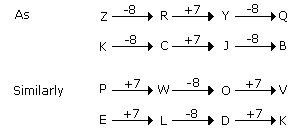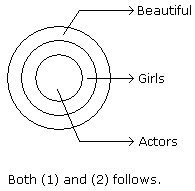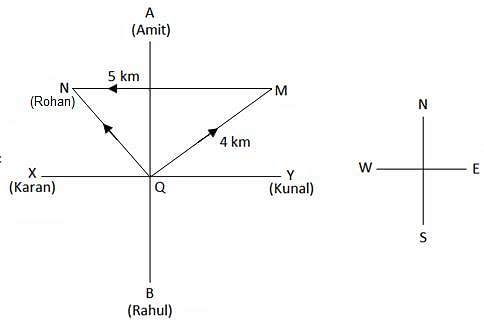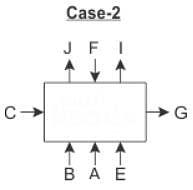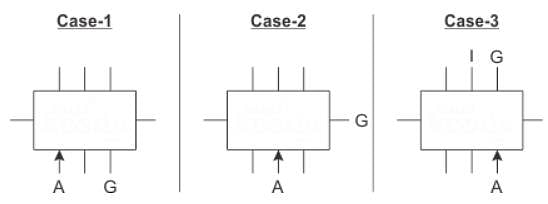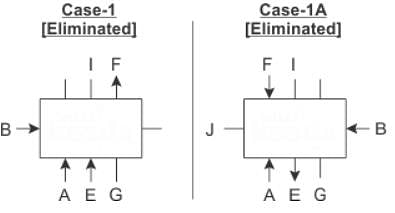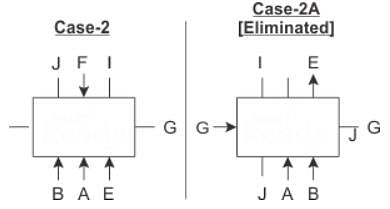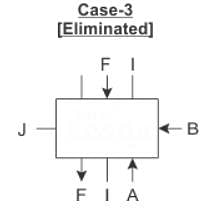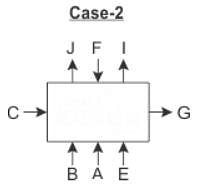Indian Air Force Agniveer Other than Science Subject Mock Test - 4 - Indian Air Force Agniveer Vayu MCQ
30 Questions MCQ Test Indian Air Force Agniveer Vayu Group X Mock Test Series 2024 - Indian Air Force Agniveer Other than Science Subject Mock Test - 4
Read the each sentence to find out whether there is any grammatical error in it. The error, if any will be in one part of the sentence. The letter of that part is the answer. If there is no error, the answer is 'D'. (Ignore the errors of punctuation, if any).
Read the each sentence to find out whether there is any grammatical error in it. The error, if any will be in one part of the sentence. The letter of that part is the answer. If there is no error, the answer is 'D'. (Ignore the errors of punctuation, if any).
In the following questions four alternatives are given for the idiom/phrase italicised and underlined in the sentence. Choose the alternative which best expresses the meaning of idiom/phrase.
Q. The party stalwarts have advised the President to take it lying down for a while.
The year 1973… (1)… a watershed in the economic….(2)…..of young male high school graduates in the United States. In the twenty four years…(3).. to this date, the medium income of 25 to 34 year old males, ….(4)… highest level of educational attainment was a high school diploma, ……(5)…. from $14,483 to $24,482 (in constant 1987 dollars.) This increase was the ….(6)… of the rapid growth of the U.S. economy..(7)… this period. As the expression goes, the rapidly growing economy was like a rising tide that…(8)… all boats. This rapid…(9)… in income permitted several generations of young high-school educated men to enjoy a higher standard of living….(10)…their fathers had.
Q. Find the word most appropriate for Blank No. 10
If seriously mentally ill people do not receive medication, they can grow unable tosupport themselves, become irrational, and perhaps even threatening the safetyof themselves or others.
If sentence (3), 'In most economic systems, the prices of the majority of goods and services do not change over short periods of time' is the first sentence, what is the order of other sentences after rearrangement?
1. In some, it is of course possible for an individual to bargain over prices, because they are not fixed in advance.
2. When planning his expenditure, he must therefore accept these fixed prices.
3. In most economic systems, the prices of the majority of goods and services do not change over short periods of time.
4. A consumer will go on buying bananas for as long as he continues to be satisfied.
5. If he buys more, he shows that his satisfaction is still greater than his dislike of losing money.
6. In general terms, however, the individual cannot change the prices of the commodities he wants.
Direction: In the questions given below a sentence is given with two blanks in each. Corresponding to each question two columns are given with three words in each column. Which combination of words from the two columns will perfectly fit into the blanks to make the sentence contextually correct and meaningful?
IIT-Bombay has been ______________ India’s best university for the second year in a row, ___________ a global ranking of 152 in the QS World University Rankings for 2020.

Directions: Read the passage and answer the questions that follow:
Development is about expanding the capabilities of the disadvantaged, thereby improving their overall quality of life. Based on this understanding, Maharashtra, one of India’s richest States, is a classic case of a lack of development which is seen in its unacceptably high level of malnutrition among children in the tribal belts. While the State’s per capita income has doubled since 2004, its nutritional status has not made commensurate progress.
Poor nutrition security disproportionately affects the poorest segment of the population. According to NFHS 2015-16, every second tribal child suffers from growth restricting malnutrition due to chronic hunger. In 2005, child malnutrition claimed as many as 718 lives in Maharashtra’s Palghar district alone. Even after a decade of double digit economic growth (2004-05 to 2014-15), Palghar’s malnutrition status has barely improved.
In September 2016, the National Human Rights Commission issued notice to the Maharashtra government over reports of 600 children dying due to malnutrition in Palghar. The government responded, promising to properly implement schemes such as Jaccha Baccha and Integrated Child Development Services to check malnutrition. Our independent survey conducted in Vikramgad block of the district last year found that 57%, 21% and 53% of children in this block were stunted, wasted and underweight, respectively; 27% were severely stunted. Our data challenges what Maharashtra’s Women and Child Development Minister said in the Legislative Council in March — that “malnutrition in Palghar had come down in the past few months, owing to various interventions made by the government.”
Stunting is caused by an insufficient intake of macro- and micro-nutrients. It is generally accepted that recovery from growth retardation after two years is only possible if the affected child is put on a diet that is adequate in nutrient requirements. A critical aspect of nutrient adequacy is diet diversity, calculated by different groupings of foods consumed with the reference period ranging from one to 15 days. We calculated a 24-hour dietary diversity score by counting the number of food groups the child received in the last 24 hours. The eight food groups include: cereals, roots and tubers; legumes and nuts; dairy products; flesh foods; eggs; fish; dark green leafy vegetables; and other fruits and vegetables.
In most households it was rice and dal which was cooked most often and eaten thrice a day. These were even served at teatime to the children if they felt hungry. There was no milk, milk product or fruit in their daily diets. Even the adults drank black tea as milk was unaffordable. Only 17% of the children achieved a minimum level of diet diversity — they received four or more of the eight food groups. This low dietary diversity is a proxy indicator for the household’s food security too as the children ate the same food cooked for adult members.
Q. As per the passage, which of the following is/are needed for an adequate meal?
I. Macro and micro nutrients
II. Multiple food groups
III. High level of Intermittent fasting
Directions: Read the passage and answer the questions that follow:
Development is about expanding the capabilities of the disadvantaged, thereby improving their overall quality of life. Based on this understanding, Maharashtra, one of India’s richest States, is a classic case of a lack of development which is seen in its unacceptably high level of malnutrition among children in the tribal belts. While the State’s per capita income has doubled since 2004, its nutritional status has not made commensurate progress.
Poor nutrition security disproportionately affects the poorest segment of the population. According to NFHS 2015-16, every second tribal child suffers from growth restricting malnutrition due to chronic hunger. In 2005, child malnutrition claimed as many as 718 lives in Maharashtra’s Palghar district alone. Even after a decade of double digit economic growth (2004-05 to 2014-15), Palghar’s malnutrition status has barely improved.
In September 2016, the National Human Rights Commission issued notice to the Maharashtra government over reports of 600 children dying due to malnutrition in Palghar. The government responded, promising to properly implement schemes such as Jaccha Baccha and Integrated Child Development Services to check malnutrition. Our independent survey conducted in Vikramgad block of the district last year found that 57%, 21% and 53% of children in this block were stunted, wasted and underweight, respectively; 27% were severely stunted. Our data challenges what Maharashtra’s Women and Child Development Minister said in the Legislative Council in March — that “malnutrition in Palghar had come down in the past few months, owing to various interventions made by the government.”
Stunting is caused by an insufficient intake of macro- and micro-nutrients. It is generally accepted that recovery from growth retardation after two years is only possible if the affected child is put on a diet that is adequate in nutrient requirements. A critical aspect of nutrient adequacy is diet diversity, calculated by different groupings of foods consumed with the reference period ranging from one to 15 days. We calculated a 24-hour dietary diversity score by counting the number of food groups the child received in the last 24 hours. The eight food groups include: cereals, roots and tubers; legumes and nuts; dairy products; flesh foods; eggs; fish; dark green leafy vegetables; and other fruits and vegetables.
In most households it was rice and dal which was cooked most often and eaten thrice a day. These were even served at teatime to the children if they felt hungry. There was no milk, milk product or fruit in their daily diets. Even the adults drank black tea as milk was unaffordable. Only 17% of the children achieved a minimum level of diet diversity — they received four or more of the eight food groups. This low dietary diversity is a proxy indicator for the household’s food security too as the children ate the same food cooked for adult members.
Q. What is ironical about the situation mentioned in paragraph 1?
Directions: Read the passage and answer the questions that follow:
Development is about expanding the capabilities of the disadvantaged, thereby improving their overall quality of life. Based on this understanding, Maharashtra, one of India’s richest States, is a classic case of a lack of development which is seen in its unacceptably high level of malnutrition among children in the tribal belts. While the State’s per capita income has doubled since 2004, its nutritional status has not made commensurate progress.
Poor nutrition security disproportionately affects the poorest segment of the population. According to NFHS 2015-16, every second tribal child suffers from growth restricting malnutrition due to chronic hunger. In 2005, child malnutrition claimed as many as 718 lives in Maharashtra’s Palghar district alone. Even after a decade of double digit economic growth (2004-05 to 2014-15), Palghar’s malnutrition status has barely improved.
In September 2016, the National Human Rights Commission issued notice to the Maharashtra government over reports of 600 children dying due to malnutrition in Palghar. The government responded, promising to properly implement schemes such as Jaccha Baccha and Integrated Child Development Services to check malnutrition. Our independent survey conducted in Vikramgad block of the district last year found that 57%, 21% and 53% of children in this block were stunted, wasted and underweight, respectively; 27% were severely stunted. Our data challenges what Maharashtra’s Women and Child Development Minister said in the Legislative Council in March — that “malnutrition in Palghar had come down in the past few months, owing to various interventions made by the government.”
Stunting is caused by an insufficient intake of macro- and micro-nutrients. It is generally accepted that recovery from growth retardation after two years is only possible if the affected child is put on a diet that is adequate in nutrient requirements. A critical aspect of nutrient adequacy is diet diversity, calculated by different groupings of foods consumed with the reference period ranging from one to 15 days. We calculated a 24-hour dietary diversity score by counting the number of food groups the child received in the last 24 hours. The eight food groups include: cereals, roots and tubers; legumes and nuts; dairy products; flesh foods; eggs; fish; dark green leafy vegetables; and other fruits and vegetables.
In most households it was rice and dal which was cooked most often and eaten thrice a day. These were even served at teatime to the children if they felt hungry. There was no milk, milk product or fruit in their daily diets. Even the adults drank black tea as milk was unaffordable. Only 17% of the children achieved a minimum level of diet diversity — they received four or more of the eight food groups. This low dietary diversity is a proxy indicator for the household’s food security too as the children ate the same food cooked for adult members.
Q. Which of the following is/are true as per the passage?
I. India’s situation is worse than in some of the world’s poorest countries — Bangladesh, Afghanistan or Mozambique.
II. Development is more than just economic growth.
III. On an average, the nutrition expenditure as a percentage of the Budget has drastically declined from 1.68% in 2012-13 to 0.94% in 2018-19.
Directions: Out of the given alternatives, choose the one which can be substituted for the given words/sentence.
A person who is womanish in his habits
It is a political organisation that subscribes to a particular ideology and seeks to attain political power
Find the rate of interest if the amount after 2 years of simple interest on a capital of Rs. 1200 is Rs. 1440.
?, 6, 10.5, 23, 60
Directions to Solve
In each of the following questions find out the alternative which will replace the question mark.
Question -
ZRYQ : KCJB :: PWOV : ?
Directions to Solve
In each of the following questions two statements are given and these statements are followed by two conclusions numbered (1) and (2). You have to take the given two statements to be true even if they seem to be at variance from commonly known facts. Read the conclusions and then decide which of the given conclusions logically follows from the two given statements, disregarding commonly known facts.
Question -
Statements: All the actors are girls. All the girls are beautiful.
Conclusions:
- All the actors are beautiful.
- Some girls are actors.
If A + B means A is the brother of B; A - B means A is the sister of B and A x B means A is the father of B. Which of the following means that C is the son of M?
Find the one which does not belong to that group ?
In human body, Vitamin A is stored in the
The Thar Express goes to –
What was Chandragupta II also known as?
Which of the following trends were seen in the Indian economy after the 1991 economic reforms?
1. The growth rate steadily increased.
2. Agriculture and allied sector continuously show a positive growth rate.
3. Share of the public sector in total investment increased.
Which of the statements given above is/are correct?
A dishonest milkman mixes 20 litres of water with 80 litres of milk. After selling one-fourth of this mixture, he adds water to replenish the quantity that he had sold. What is the current proportion of water to milk?
Directions: Study the following information carefully to answer the given question.
There are two axes AB and XY such that A is in north, B is in south, X is in west and Y is in east. Q is the point of intersection of both the axes. At A, B, X and Y, there are houses of 4 friends - Amit, Rahul, Karan and Kunal, respectively. Another friend Rohan is standing at the point 'Q' facing north-east direction. He then walks 4 km in the same direction which he is facing and reaches 'M'. Then he turns 135° anticlockwise and walks 5 km straight and reaches 'N'. Amit starts walking towards south from his house and reaches point Q. After reaching Q, Rohan tells Amit to meet him at N; so Amit travels the shortest distance possible to reach N in the end where he meets Rohan.
Q. Point 'M' is in which direction with respect to Rahul's house?
In which country did India's High Commission unveil the Subarno Jayanti-ICCR Scholarship Program?
Which city hosted the 67th TAAI Convention?
What is the objective of the NCC Integrated Software launched by Raksha Mantri Rajnath Singh?
Direction : Study the following question carefully and choose the right answer.
Q: In a certain code RAIN is written as TCKP. How is CLOUD written in that code?
Direction : Study the following question carefully and choose the right answer.
Q: If in a code language ‘PUTREFY’ is written as ‘XPQSTRL’ and ‘NAVIGATE’ is written as ‘GYMOWYQT’ how is ‘AVIARY’ written in that language?
Directions: Read the following information carefully and answer the questions given beside.
Eight persons viz. A, B, C, E, F, G, I and J sit around a rectangular table such that three persons sit on each longer side and one person sits on each shorter side. Nobody sits at the corners. The persons whose name starts with vowel do not sit on the shorter side of the table. Three of them face away from centre while the rest five face towards the centre.
B, who faces centre sits second to the left of E. J is on the immediate right of F, who is at a gap of two persons from E. Neither C nor A face away from centre. The immediate neighbors of F face away from centre. G is second to the right of A. I is on the immediate left of F. I is neither adjacent to A nor to C. E is adjacent to G.
Q. Who is third to the right of I?




